Empty pipes are useless: what and how to fill the heating system in a private house?
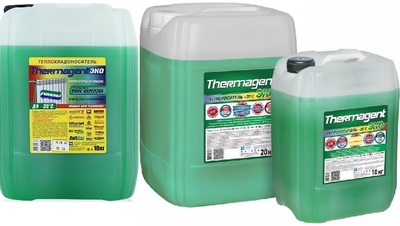
Coolant – is a liquid that is added to the heating system to transfer heat from the boiler to the radiators.
The first time the structure is filled in by specialistsThey check the correct installation and operation of the equipment.
After this, the user fills out the system independently to save money and timeIt is not advisable to contact specialists every time, so system owners are advised to familiarize themselves with the rules for supplying coolant to the structure in advance or watch how professionals do it.
Content
- The need to fill the heating system in a private house
- Frequency of replacement of coolant
- Types of liquids: what is better to use
- How to fill an open system?
- Filling a closed circuit
- Correctly fill out the diagram with a double-circuit boiler
- With electric boiler
- Control of coolant parameters
- Useful video
- Conclusion
- Comments (1 opinion)
The need to fill the heating system in a private house
The coolant is drained from the heating circuit in a private house when carrying out repair work. The liquid is also removed for the spring-summer periodwhen the heating goes out.
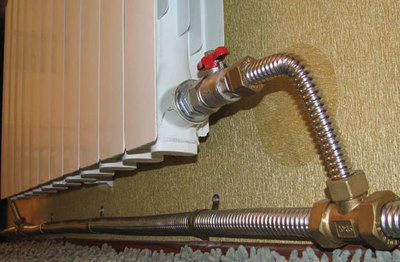
This manipulation is performed for prevention purposes. corrosion, but it also leads to negative consequences: the appearance of air inside the system. This problem threatens serious trouble:
- the operational period is reduced structures, since air, when interacting with water, causes corrosion on the metal;
- the supply of coolant is deteriorating to the batteries due to air locks.
For these reasons, the heating system in a private house is filled in the summer, but only if the pipes are made of stainless materials.
Frequency of replacement of coolant
The frequency of fluid replacement depends on the design used to heat a private home:
- Into the system open like experts advise top up the fluid regularly, since the coolant constantly evaporates during the operation of the structure. The water is not completely drained here. The exception is repair and checking of the seal after flushing.
- IN closed the design does not require constant addition of coolant liquid change after a few years after the start of operation and after preventive cleaning.
Types of liquids: what is better to use
Different types of liquid are used as a heat carrier.
Water
Benefits of using water:
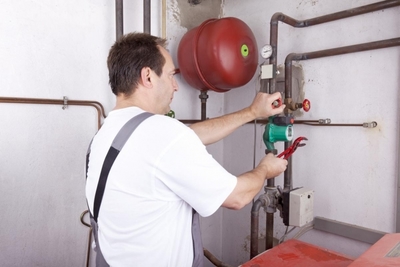
- High heat capacity. Water will provide a comfortable temperature inside the room, even if it is freezing outside.
- Low viscosity. Due to this, the pump experiences minimal load during operation, which guarantees long-term operation of the device.
- Does not cause health problems for users thanks to absence of toxicity.
- Low coefficient of expansion when heated: only 0.03%/degTherefore, a small expansion tank is installed in the structure.
- Affordable price.
However, water together with oxygen causes corrosion metal, but this problem is relevant only for metal pipes.
Antifreeze
Tosol is a liquid used for water cooling structures of car engines. But Tosol is also used as a heat carrier for heating a private home.
Pros of the liquid:
- low coefficient of expansion when heated: 0.05%/deg;
- does not cause rust on metal due to the presence of anti-corrosion substances in the composition.
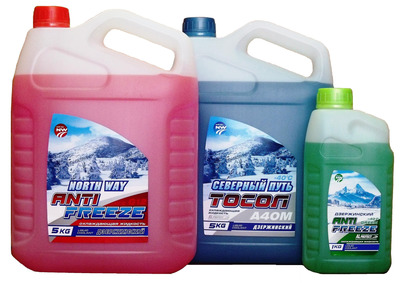
Disadvantages of antifreeze:
- High cost: from 60 rubles per liter in retail stores and from 40 rubles for wholesale deliveries.
- Average heat capacity. A house with such a coolant does not always have a comfortable temperature.
- High viscosity. This puts a lot of stress on the pump when it is running and can cause the unit to fail.
- ToxicityToxic substances in the coolant have an adverse effect on the health of users.
Propylene glycol
This liquid serves as the basis for the production of non-freezing coolant. Its advantages:
- absence of toxicity, therefore, the use of propylene glycol is safe for the health of the inhabitants of the house;
- low expansion coefficient: 0.05%/deg;
- prevents rust formation thanks to anti-corrosion components.
Disadvantages of liquid:
- High price: from 100 rubles per liter.
- Low heat capacity, therefore, the room with this coolant is always cool.
- High viscosityThis creates a load on the pump during operation and reduces its service life.
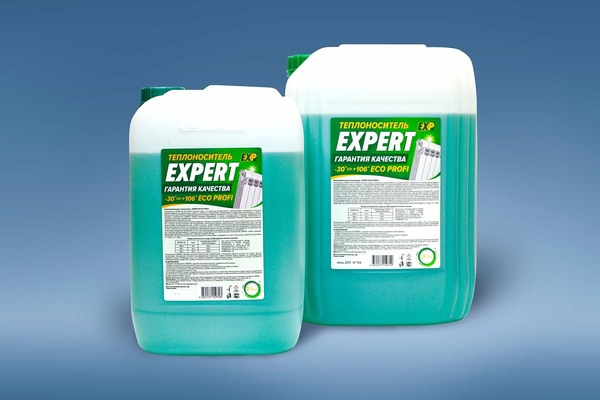
Photo 1. Heat carrier Expert-30 Eco Profi, made on the basis of propylene glycol, manufacturer - OOO KhimProm43.
Brine
In heating systems, brine of table salt and other similar salts is used. Such a heat carrier is used only in open-type structures.
Pros of the liquid:
- Affordable price: from 10 rubles per 1 kg.
- Low viscosity, therefore the pump experiences minimal load during operation.
- No toxicity, which makes the solution safe for health.
- Low expansion coefficient: 0.03%/deg.
Disadvantages of brine:
- Promotes education rust on metal in a short time even without contact with oxygen.
- Low heat capacity, therefore the brine does not provide uniform heating of the room.
Important! For heating systems that are operated the entire heating season, recommend using plain water. If the structure periodically switches off, then experts advise choosing non-freezing coolant for filling.
How to fill an open system?
To fill the circuit of an open-type heating system, no devices are used. All you need is clean bucket or hose for easy liquid supply. Pour the coolant into the expansion tank to the very top. Then completely release the air. If the water level in the tank drops below half, repeat the manipulation. Release the air. The structure is ready for use. In a few weeks repeat the procedure.
Filling a closed circuit
The closed heating system is filled with water in several ways.
Through recharge
Filling through make-up is carried out only if the system is connected to the water supply. Rules for performing work:
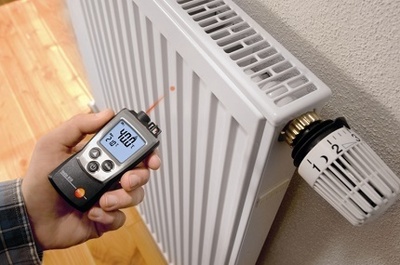
- Drain old coolant.
- Open the tap, which is located at the bottom of the boiler. After that, open the air bleed valve at the highest point. When the water starts flowing, close both valves.
- Start the boiler. If you hear any strange sounds, remove the cover from the device and find the circulation pump.
- Loosen the screws, but do not unscrew them completely. Do not tighten them until the liquid appears. As soon as the coolant starts flowing, the excess air will go away. Return the screws to their original position. and close the boiler lid.
Important! Do not turn on the boiler at full power immediately after starting operation or filling the system. Rapid heating will cause water hammer and damage to the structure.
By pump
A pump is used to fill the circuit. Algorithm for performing the work:
- Connect the pump to the coolant tank and the heating circuit. Open the shut-off valve and the expansion tank valve. Start the mechanism. The pump operates until the pressure reaches 1.5 atmospheres. Turn off the device and the circulation device.
- Open Mayevsky cranes. The air will come out through them. When the liquid starts flowing, close the taps.
- Start the pumpThe unit will again increase the pressure to an acceptable level and fill the structure with coolant.
Correctly fill out the diagram with a double-circuit boiler
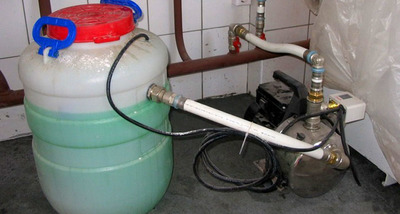
Filling a double-circuit boiler does not pose any problems even for non-professionals, since the device is equipped with feed unit.
The algorithm for filling the circuit is similar to the rules for adding coolant through make-up:
- open all air bleed valves;
- activate make-up tap;
- when the water starts flowing, close the air bleed valves;
- when the pressure rises to the set limit, close the feed.
Important! The maximum pressure limit is specified in the unit's data sheet. Exceeding the limit is unacceptable and leads to irreversible consequences.
With electric boiler
The structure with an electric boiler is filled with a coolant, like any closed-type heating system. If a circuit is used antifreeze, then the rules for filling it will be different. The system is filled with antifreeze in several ways:
- Manual pressure testing pumpThe liquid is pumped by this device up to the upper pressure limit.
- Electric pump. One end of it is connected to the container with the coolant, the other to the system. The liquid is pumped up to the upper pressure limit. Then the air is released from the circuit and the manipulation is repeated.
- Through the hose. The lower end is fixed on the non-return valve branch pipe, and the upper end is raised to the highest point of the system. After completing the work, a container is placed under the tap to drain excess liquid.
Control of coolant parameters
Control of the parameters of the heating system fluid guarantees a long operational period of the structure. The main criterion for assessing the coolant in an open-type circuit is water level.
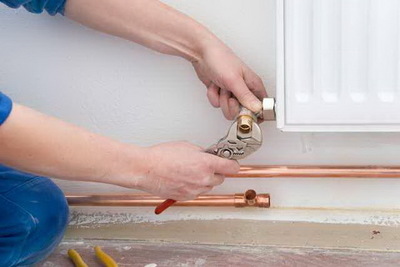
This control is carried out by visual inspection of the expansion tank. The permissible limit is the device is half full.
If the coolant has dropped below this value, experts recommend adding water.
The next parameter to look at is liquid temperature. Optimal indicators - from 30 to 90 degrees Celsius. If the temperature rises above the norm, the paintwork inside the circuit decomposes. This prohibited by sanitary regulations, therefore, the liquid must not be allowed to boil.
To control the temperature, it is recommended to install remote temperature sensor on the coolant pipe. Thick paper is placed between the pipe and the device. Thanks to this manipulation, the sensor will show an accurate value without errors. In case of temperature above the set norm, the boiler power is reduced and water is added if an open type design is used.
Useful video
Check out the video that talks about the advantages and disadvantages of different types of coolants.
Conclusion
Timely adding liquid to the heating system of a private house and monitoring the coolant guarantees long service life of the circuit without breakdowns. The user performs maintenance independently, without resorting to the help of specialists. This allows saving on the work of craftsmen.







Comments